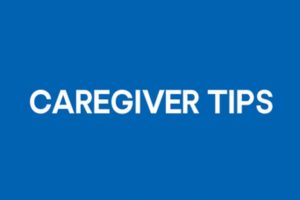Caregiving benefits are within top 10 priorities for employees

A growing number of employers are becoming aware that workers are providing greater hands-on support to aging parents and other family members — and that employers can help through employee benefits, according to the report, “Caregiving Growing in Importance to Employers,” by the Northeast Business Group on Health in collaboration with AARP.
NEBGH surveyed benefits managers from 129 U.S. employers and found that two-thirds (66 percent) agree that during the next five years, caregiving will become an increasingly important issue to their workers. Nearly half (45 percent) say caregiving benefits are within their top 10 priorities for employee health and benefit issues, while 12 percent say it’s within their top five priorities.
“Our aging population means that more employees — and millennials, specifically — will be providing some type of help to sick or immobile loved ones, from preparing meals and providing transportation to doctors’ appointments, to performing more onerous responsibilities,” says Jeremy Nobel, executive director of NEBGH’s Solutions Center. “The implications of this trend are significant not only for workplace productivity, but for employee population health and health care costs — caregivers tend to abandon their own physical and emotional needs and employers need to plan for how to respond.”
Most companies that responded let their workers use sick, vacation or personal days to care for another; a majority offer flexible work schedules, and some offer paid family medical leave. However, few offer paid leave that can be used for parental or caregiving and even fewer — just 14 — offer paid leave exclusively for caregiving (separate from parental leave).
Moreover, while a majority offer an employee assistance program and/or a work-life program, not many of those programs have services specific to caregivers. Less than one-third of respondents provide access to caregiver support or employee resource groups; counseling, coaching or wellness programs specific to supporting caregivers themselves; subsidized in-home back-up care, such as Bright Horizons; or access to free or low-cost resources to support caregivers.
“Caregiving as a benefits issue is on the radar of most employers, but there is wide variation in the support employers provide for employee-caregivers,” says Laurel Pickering, president and chief executive of NEBGH. “Employers cite absence of employer benchmarks and best practices for caregiving, lack of financial resources and lack of data to identify caregivers, as the greatest barriers to becoming more caregiving friendly.”
Survey respondents ranked the greatest drivers that would make a compelling case for investment in “caregiving-friendly” benefits, programs and resources: an increase in productivity; a decrease in absenteeism; reduced health care costs; an enhanced ability to recruit and retain talent; and anecdotal evidence of the emotional impact on employees who are caregivers.
“Family caregiving is an issue that affects the vast majority of us. We are either caregivers now, have been in the past, will be in the future or will need care ourselves,” says Nancy LeaMond, AARP’s chief advocacy and engagement officer. “Of today’s 40 million family caregivers, 24 million are juggling caregiving responsibilities and employment. By recognizing and supporting their needs, employers can improve productivity and foster a stable and healthy workforce. It is great to see so many leading employers open to understanding this issue better, and we are pleased to be working together to help America’s family caregivers.”
JUL 21, 2017 | BY KATIE KUEHNER-HEBERT











